

Music is an art, entertainment, or other human activity which involves structured and audible sound, though definitions vary.
Music is an art form whose medium is sound and silence. Its common elements are pitch (which governs melody and harmony), rhythm (and its associated concepts tempo, meter, and articulation), dynamics, and the sonic qualities of timbre and texture. The word derives from the Greek "Art of the Muses".
The creation, performance, significance, and even the definition of music vary according to culture and social context. Music ranges from strictly organized compositions (and their recreation in performance), through improvisational music to aleatoric forms. Music can be divided into genres and subgenres, although the dividing lines and relationships between music genres are often subtle, sometimes open to individual interpretation, and occasionally controversial. Within the arts, music may be classified as a performing art, a fine art, and auditory art. It may also be divided among art music and folk music. There is also a strong connection between music and mathematics. Music may be played and heard live, may be part of a dramatic work or film, or may be recorded.

Music listening habits can be split into five distinct blocks throughout the day making it something else that follows the circadian rhythm of our bodies, alongside sleep, eating habits, and more Science Alert - November 13, 2021
Through an analysis of over 2 billion music streaming data points on Spotify, the study identifies five phases of listening that we generally stick to through each 24-hour period: morning, afternoon, evening, night, and late night/early morning. While we're not all listening to the same tracks in the same parts of the day, most of us are changing up what we listen to on the same sort of schedule. Think about how the music you listen to when you wake up differs from the music you fall asleep to, for example.

Musicians sometimes claim to channel the music of someone who is deceased. This is not unlike automatic writing and channeled art. Your brain and DNA Codes have to be programmed for it in the Simulation of reality.
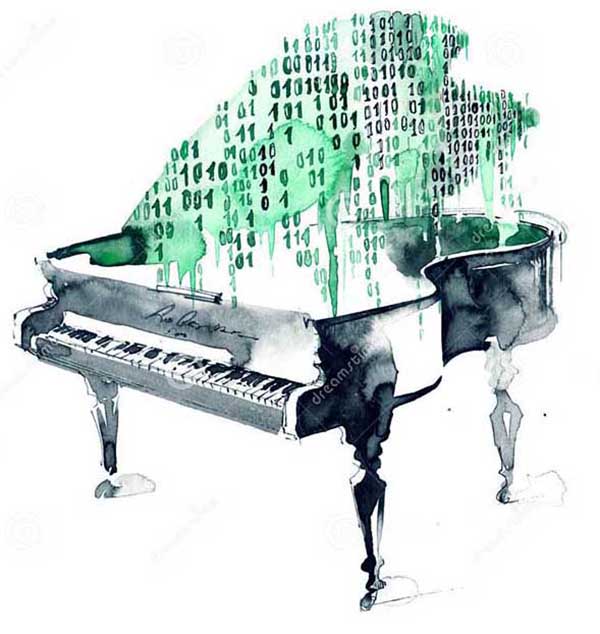
The vibrations of drums are very powerful, and used for healing and ceremonial rituals.
Ceremonial drums are used in a ritual context by indigenous peoples around the world, often accompanied by singing or chanting. In the circumpolar regions the drums have been classified by traits such as the knob, frame design, size, membrane motifs, ornaments, etc. There are therefore two main groups of drums: those with internal and those with external knobs. Drums with internal knobs are found amongst the Tjuktjer in Asia and among North American Inuit. Drums with external knobs are more widespread and are divided into four types:
The historical Saami drum, sometimes termed rune drum, belonged to the South Siberian kind, Sajano-Yeniseic subtype. (Those are, however, very similar to the Sjoric subtypes.) The Sami word for drum is 'kannus', 'kobdas' and the Altaic term is 'komus'. The Sami drum-stick term is 'arpa'; the Altaic term is 'orba'.
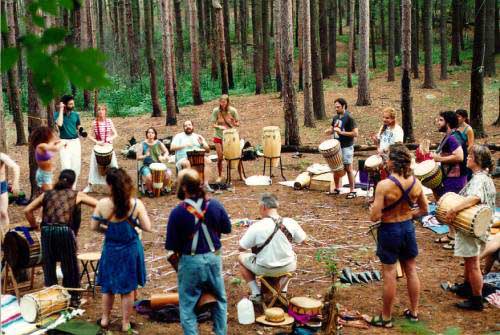
A drum circle is any group of people playing (usually) hand-drums and percussion in a circle. They are distinct from a drumming group or troupe in that the drum circle is an end in itself rather than preparation for a performance. They can range in size from a handful of players to circles with thousands of participants. Drum circles are related to other community-based music gatherings such as flute circles or vocal improvisation groups. Read more

Didgeridoo
The didgeridoo (also known as a didjeridu or didge) is a wind instrument developed by Indigenous Australians of northern Australia around 1,500 years ago and still in widespread usage today both in Australia and around the world. It is sometimes described as a natural wooden trumpet or "drone pipe". Musicologists classify it as a brass aerophone.
There are no reliable sources stating the didgeridoo's exact age. Archaeological studies of rock art in Northern Australia suggest that the people of the Kakadu region of the Northern Territory have been using the didgeridoo for less than 1,000 years, based on the dating of paintings on cave walls and shelters from this period. A clear rock painting in Ginga Wardelirrhmeng, on the northern edge of the Arnhem Land plateau, from the freshwater period shows a didgeridoo player and two songmen participating in an Ubarr Ceremony.
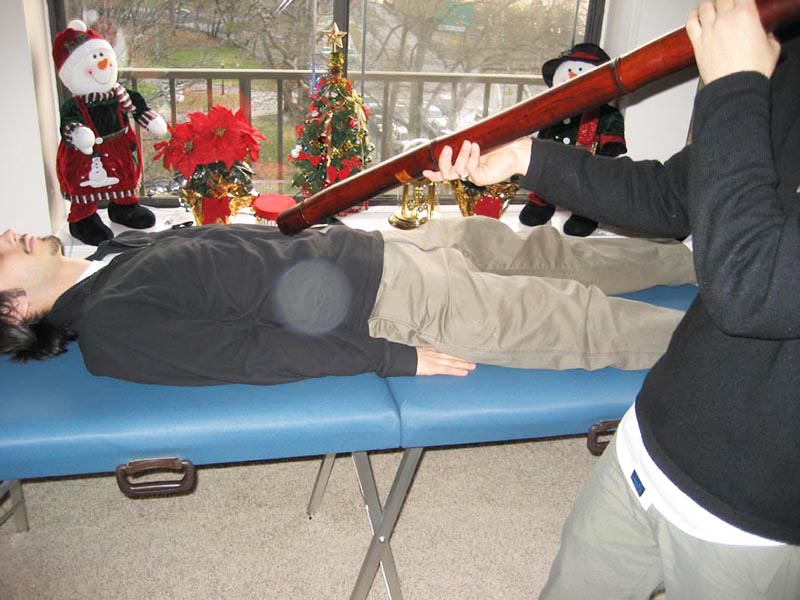
An interesting orb showed up in this photo taken in my home
A modern didgeridoo is usually cylindrical or conical, and can measure anywhere from 1 to 3 m (3 to 10 ft) long. Most are around 1.2 m (4 ft) long. The length is directly related to the 1/2 sound wavelength of the keynote. Generally, the longer the instrument, the lower the pitch or key of the instrument.

Music can set the "tone" for human and animal behavior. From physical sounds to subliminal tones, music has always been part of the equation. Both adults and children listen to music as a form of relaxation, meditation, healing, or part of something that clams the mind allowing them to create balance. You find the frequency of the music you like and go from there.
In a world of healing, among a host of alternative therapies for treating emotional and physical problems, music has proven a vital part of the therapeutic process. Hospitals and nursing homes across the country are adding music to their therapeutics as a way to reduce fear and stress.
Music therapy is an allied health profession and one of the expressive therapies, consisting of a process in which a music therapist uses music and all of its facets - physical, emotional, mental, social, aesthetic, and spiritual - to help clients improve their physical and mental health. Music therapists primarily help clients improve their health in several domains, such as cognitive functioning, motor skills, emotional development, social skills, and quality of life, by using music experiences such as free improvisation, singing, and listening to, discussing, and moving to music to achieve treatment goals. It has a wide qualitative and quantitative research literature base and incorporates clinical therapy, psychotherapy, biomusicology, musical acoustics, music theory, psychoacoustics, embodied music cognition, aesthetics of music, sensory integration, and comparative musicology. Referrals to music therapy services may be made by other health care professionals such as physicians, psychologists, physical therapists, and occupational therapists. Clients can also choose to pursue music therapy services without a referral (i.e., self-referral).
Music therapists are found in nearly every area of the helping professions. Some commonly found practices include developmental work (communication, motor skills, etc.) with individuals with special needs, songwriting and listening in reminiscence/orientation work with the elderly, processing and relaxation work, and rhythmic entrainment for physical rehabilitation in stroke victims. Music therapy is also used in some medical hospitals, cancer centers, schools, alcohol and drug recovery programs, psychiatric hospitals, and correctional facilities.
Certain music can also help with learning difficult skills. Some students can study with music while others find it a distraction. You just have to know how you are programmed. Music therapy itself is the clinical and evidence-based use of music interventions to accomplish individualized goals within a therapeutic relationship by a credentialed professional who has completed an approved music therapy program.
Music therapy is an allied health profession and one of the expressive therapies, consisting of an interpersonal process in which a certified music therapist uses music and all of its facets - physical, emotional, mental, social, aesthetic, and spiritual - to help clients to improve or maintain their health.
Music therapists primarily help clients improve their health across various domains (e.g., cognitive functioning, motor skills, emotional and affective development, behavior and social skills, and quality of life) by using music experiences (e.g., free improvisation, singing, songwriting, listening to and discussing music, moving to music) to achieve treatment goals and objectives. It is considered both an art and a science, with a wide qualitative and quantitative research literature base incorporating areas such as clinical therapy, biomusicology, musical acoustics, music theory, psychoacoustics, embodied music cognition, aesthetics of music, and comparative musicology. Referrals to music therapy services may be made by other health care professionals such as physicians, psychologists, physical therapists, and occupational therapists. Clients can also choose to pursue music therapy services without a referral (i.e., self-referral).
Music therapists are found in nearly every area of the helping professions. Some commonly found practices include developmental work (communication, motor skills, etc.) with individuals with special needs, songwriting and listening in reminiscence/orientation work with the elderly, processing and relaxation work, and rhythmic entrainment for physical rehabilitation in stroke victims. Music therapy is also used in some medical hospitals, cancer centers, schools, alcohol and drug recovery programs, psychiatric hospitals, and correctional facilities. Read more
Music therapy found to significantly reduce pain, stress and anxiety in community hospitals Medical Express - April 26, 2023
A new study found patients with moderate-to-severe pain, stress, or anxiety treated at UH community hospitals reported clinically significant reductions in pain, stress, and anxiety in response to a single session of music therapy.
Music aids the healing process BCC - July 21, 2006
Listening to music makes us feel better - but many doctors are now beginning to believe that it does much more. There is emerging evidence that it can bring about physical changes to the body that can improve our health. A scientific study has found that hospital patients who listen to live music need less drugs and recover more quickly than those who do not.
Research reveals the biochemical connection between music and emotion PhysOrg - January 19, 2011
When music sounds this good, there's a reason: dopamine. The direct link between the elation stimulated by music and the neurotransmitter dopamine. Dopamine is the same substance that puts the joy in sex, the thrill in certain illegal drugs, and the warm feeling within a woman breast-feeding her child. The substance also may explain why the power of music crosses human cultures, the scientists said.
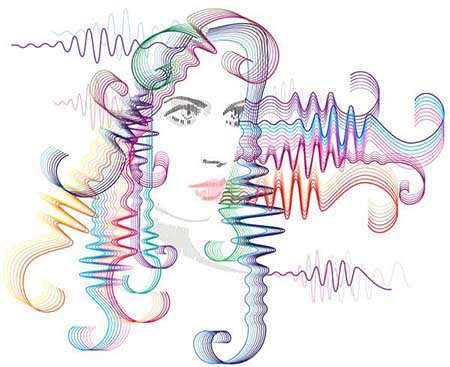
Synesthesia and Music
The brain displays music as streaming colored vibrations
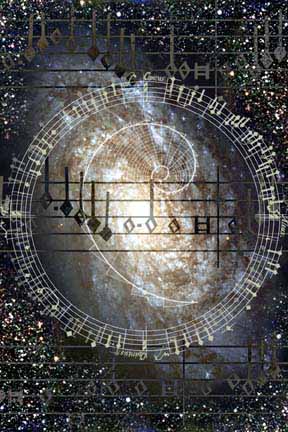
Creation is said to have begun with a tone after which all emerged from a source of consciousness creating multidimensional grids in the Simulation we think of as reality. It is all sound, light, and color to experience emotions within a linear time algorithm.
'Birth cry' of the cosmos heard BBC - June 23, 2004
Over the first million years the music of the cosmos changed from a bright major chord to a somber minor one. Astronomers have recaptured the sounds of the early Universe showing it was born not with a bang but a quiet whisper that became a dull roar.
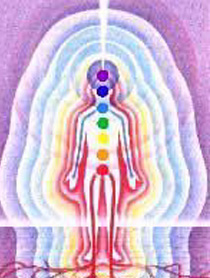
Music and Subtle Bodies
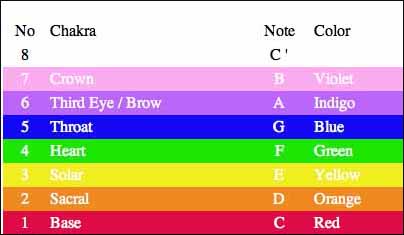
Music and Chakra Balancing

Music in Ancient China
The ancient Egyptians credited one of their gods, Thoth, with the invention of music, which Osiris in turn used as part of his effort to civilize the world. The earliest material and representational evidence of Egyptian musical instruments dates to the Predynastic period, but the evidence is more securely attested in the Old Kingdom when harps, flutes and double clarinets were played. Percussion instruments, lyres and lutes were added to orchestras by the Middle Kingdom. Cymbals frequently accompanied music and dance, much as they still do in Egypt today. Egyptian folk music, including the traditional Sufi dhikr rituals, are the closest contemporary music genre to ancient Egyptian music, having preserved many of its features, rhythms and instruments.

Music in Ancient Rome
The history of music in relation to human beings predates the written word and is tied to the development and unique expression of various human cultures. Music has influenced man, and vice versa, since the dawn of civilization. Popular styles of music varied widely from culture to culture, and from period to period. Different cultures emphasized different instruments, or techniques. Music history itself is the (distinct) subfield of musicology and history, which studies the history of music theory.
Prehistoric music can only be theorized based on findings from paleolithic archaeology sites. Flutes are often discovered, carved from bones in which lateral holes have been pierced; these are thought to have been blown at one end like the Japanese shakuhachi. The Divje Babe flute, carved from a cave bear femur, is thought to be at least 40,000 years old. Instruments such as the seven-holed flute and various types of stringed instruments, such as the Ravanahatha, have been recovered from the Indus Valley Civilization archaeological sites.
India has one of the oldest musical traditions in the world - references to Indian classical music (marga) are found in the Vedas, ancient scriptures of the Hindu tradition. The earliest and largest collection of prehistoric musical instruments was found in China and dates back to between 7000 and 6600 BC.

The Hurrian songs, found on clay tablets that date back to approximately 1400 BC, is the oldest surviving notated work of music. They are a collection of music inscribed in cuneiform on clay tablets excavated from the Hurrian city of Ugarit which date to approximately 1400 BC. One of these tablets, which is nearly complete, contains the Hurrian hymn to Nikkal (also known as the Hurrian cult hymn or A Zaluzi to the Gods, or simply h.6), making it the oldest surviving substantially complete work of notated music in the world. While the composers' names of some of the fragmentary pieces are known, h.6 is an anonymous work.
Indian classical music is one of the oldest musical traditions in the world. The Indus Valley civilization has sculptures that show dance and old musical instruments, like the seven holed flute. Various types of stringed instruments and drums have been recovered from Harrappa and Mohenjo Daro by excavations carried out by Sir Mortimer Wheeler.
The Rigveda has elements of present Indian music, with a musical notation to denote the metre and the mode of chanting. Indian classical music (marga) is monophonic, and based on a single melody line or raga rhythmically organized through talas. Hindustani music was influenced by the Persian performance practices of the Afghan Mughals. Carnatic music popular in the southern states, is largely devotional; the majority of the songs are addressed to the Hindu deities. There are a lot of songs emphasizing love and other social issues.
Asian music covers the music cultures of Arabia, Central Asia, East Asia, South Asia, and Southeast Asia. Chinese classical music, the traditional art or court music of China, has a history stretching over around three thousand years. It has its own unique systems of musical notation, as well as musical tuning and pitch, musical instruments and styles or musical genres. Chinese music is pentatonic-diatonic, having a scale of twelve notes to an octave (5 + 7 = 12) as does European-influenced music. Persian music is the music of Persia and Persian language countries: musiqi, the science and art of music, and muzik, the sound and performance of music (Sakata 1983).
Ancient Indians made 'rock music' BBC - March 19, 2004
Ancient Indians made 'rock music' - Archaeologists have rediscovered a huge rockart site in southern India where ancient people used boulders to make musical sounds in rituals. The Kupgal Hill site includes rocks with unusual depressions that were designed to be struck with the purpose of making loud, musical ringing tones. It was lost after its discovery in 1892, so this is the first fresh effort to describe the site in over a century. Details of the research are outlined in the archaeological journal Antiquity. A dyke on Kupgal Hill contains hundreds and perhaps thousands of rock art engravings, or petroglyphs, a large quantity of which date to the Neolithic, or late Stone Age (several thousand years BC). Researchers think shamans or young males came to the site to carry out rituals and to "tap into" the power of the site. However, some of it is now at threat from quarrying activities. The boulders which have small, groove-like impressions are called "musical stones" by locals. When struck with small granite rocks, these impressions emit deep, "gong-like notes".

Music was an important part of social and cultural life in Ancient Greece. Musicians and singers played a prominent role in Greek theater. Mixed-gender choruses performed for entertainment, celebration, and spiritual ceremonies. Instruments included the double-reed aulos and a plucked string instrument, the lyre, principally the special kind called a kithara.
Music was an important part of education, and boys were taught music starting at age six. Greek musical literacy created a flowering of music development. Greek music theory included the Greek musical modes, that eventually became the basis for Western religious and classical music. Later, influences from the Roman Empire, Eastern Europe, and the Byzantine Empire changed Greek music. The Seikilos epitaph is the oldest surviving example of a complete musical composition, including musical notation, from anywhere in the world.

Music and theatre scholars studying the history and anthropology of Semitic and early Judeo-Christian culture have discovered common links in theatrical and musical activity between the classical cultures of the Hebrews and those of later Greeks and Romans. The common area of performance is found in a "social phenomenon called litany," a form of prayer consisting of a series of invocations or supplications. The Journal of Religion and Theatre notes that among the earliest forms of litany, "Hebrew litany was accompanied by a rich musical tradition:"
Study finds AI-created music triggers greater emotional arousal than human compositions PhysOrg - July 24, 2025
A recent study explored a key question: Can AI-generated music produce the same emotional responses as human-composed music in audiovisual contexts? During the experiment, 88 participants watched audiovisual clips with identical visuals, but three different sound conditions: music composed by humans, AI-generated music with a complex and detailed prompt, and AI-generated music with a simple and less detailed prompt. While participants watched the clips, their physiological responses (such as pupil dilation, blinking and galvanic skin response) and their self-reported emotional reactions were measured. The results of the experiment were revealing. The AI-generated music triggered greater pupil dilation, indicating a higher level of emotional arousal. The AI music created with sophisticated prompts caused more blinking and changes in the skin, associated with a higher cognitive load.
Is There Really A Link Between Math Skills And Musical Skills? Live Science - February 25, 2024
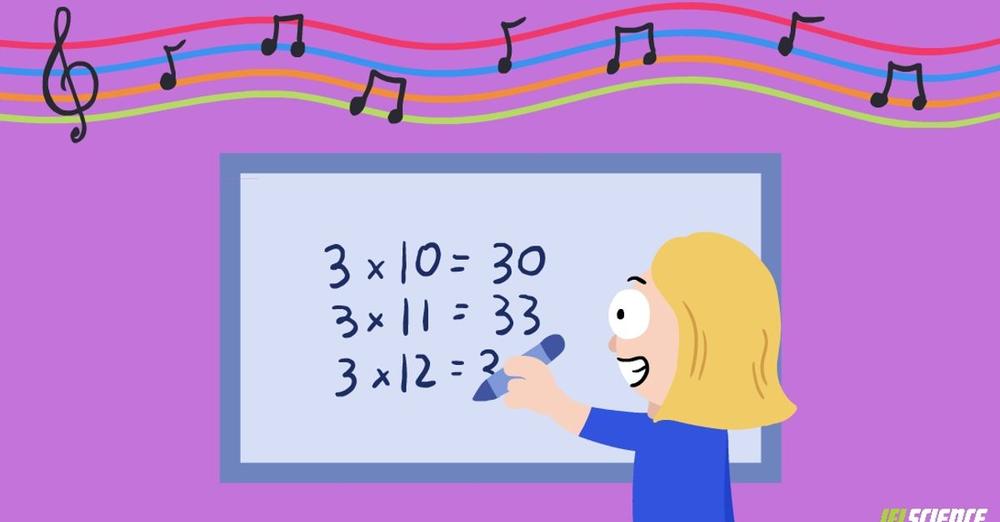
In the classical world, we have influential composer Philip Glass, who studied math and philosophy at the University of Chicago. Then there's pioneering astronomer and discoverer of Uranus William Herschel, who also managed to find time to compose a large catalog of musical works for a variety of instruments. And, perhaps the doyen of them all: Pythagoras himself. Although best known for the famous theorem that sent you to sleep at school (something something triangles?) and his slightly eccentric beliefs about beans, the so-called 'father of numbers' also made some of the first great strides in understanding the fundamentals of harmony that still apply in Western musical composition today.
Why Does Music Bring Back Memories? What The Science Says Live Science - March 12, 2023
When music brings back memories of events, people and places from our past - is known as a music-evoked autobiographical memory. And it's a common experience.
Music Is Just as Powerful at Improving Mental Health as Exercise Science Alert - March 29, 2022
New research suggests the positive impact on mental health from singing, playing, or listening to music is around the same impact experienced with exercise or weight loss.
Neuroscientists identify population of neurons in the brain that respond to singing but not other types of music Medical Express - February 22, 2022
For the first time, MIT neuroscientists have identified a population of neurons in the human brain that lights up when we hear singing, but not other types of music. These neurons, found in the auditory cortex, appear to respond to the specific combination of voice and music, but not to either regular speech or instrumental music. Exactly what they are doing is unknown and will require more work to uncover, the researchers say.
Background music disrupts creativity and verbal reasoning, experts say Daily Mail - February 28, 2019
The common belief that music boosts brain function and spurs creativity may be little more than a myth, after researchers found 'strong' evidence to suggest the opposite to be true. Music was found to significantly 'disrupt' a host of brain functions that are associated with creativity, including verbal ability and problem solving, a new study has showed. Performing these tasks under library environments however did not affect performance when compared to with working in the quiet. Putting background music on while you work or revise could in fact stunt creativity and prevents concentration, contrary to popular belief.
First violins imitated human voices: study PhysOrg - May 22, 2018
Researchers asked a professional violinist to play 15 antique instruments, including one from 1570 by Andrea Amati, the early 16th-century luthier from Cremony, Italy who is considered to be the father of the modern four-string violin. Others played in the study were from the Stradivarius family, conceived by Antonio Stradivari, who improved upon Amati's design. First, researchers recorded scales played on the 15 antique instruments played by a professional violinist and recorded at Taiwan's Chimei Museum. Then, they recorded the voices of eight men and eight women, ranging in age from 16 to 30 years, who sang common English vowels. Performing a thorough acoustic analysis, they found that an Amati violin dating to 1570 and a Gasparo da Salo violin dating to 1560 mimicked the basses and baritones of male singers, "raising the possibility that master violinmakers from this period may have designed violins to emulate male voices," said the report.
That music playing in your head is a real conundrum for scientists PhysOrg - November 10, 2017
Researchers at EPFL can now see what happens in our brains when we hear music in our heads. The researchers hope that in time their findings will be used to help people who have lost the ability to speak. When we listen to music, different parts of our brain process different information - such as high and low frequencies - so that our auditory perception of the sounds matches what we hear. It's easy to study the brain activity of someone who is listening to a song, for instance, as we have the technology to record and analyze the neural responses that each sound produces as it is heard. It's much more complicated, however, to try and understand what happens in our brain when we hear music in our heads without any auditory stimulation. As with analyzing real music, the brain's responses have to be linked to a given sound. But when the music is in our heads, that sound doesn't actually exist - or at least our ears don't hear it. Using a novel approach, researchers with EPFL's Defitech Foundation Chair in Human-Machine Interface (CNBI) were able to analyze what happens in our brains when we hum in our heads.
Newly-developed hands-free musical instrument now allows people to make music with their minds Science Daily - July 12, 2017
Neurologists have created a hands-free, thought-controlled musical instrument. They hope that this new instrument will help empower and rehabilitate patients with motor disabilities such as those from stroke, spinal cord injury, amputation, or amyotrophic lateral sclerosis (ALS).
The story of music is the story of humans PhysOrg - June 20, 2017

When did our ancestors begin making music? If we take singing, then controlling pitch is important. Scientists have studied the fossilized skulls and jaws of early apes, to see if they were able to vocalize and control pitch. About a million years ago, the common ancestor of Neanderthals and modern humans had the vocal anatomy to "sing" like us, but it's impossible to know if they did. Another important component of music is rhythm. Our early ancestors may have created rhythmic music by clapping their hands. This may be linked to the earliest musical instruments, when somebody realized that smacking stones or sticks together doesn't hurt your hands as much. Many of these instruments are likely to have been made from soft materials like wood or reeds, and so haven't survived. What have survived are bone pipes. Some of the earliest ever found are made from swan and vulture wing bones and are between 39,000 and 43,000 years old. Other ancient instruments have been found in surprising places. For example, there is evidence that people struck stalactites or "rock gongs" in caves dating from 12,000 years ago, with the caves themselves acting as resonators for the sound.
Earworms: Why Do Songs Get Stuck in Your Head? Live Science - March 5, 2017
The overall conclusion is that the song has to be quite simple in order to be recalled spontaneously, but also have something a bit unique that makes the brain want to rehearse it over and over. Scientists sometimes refer to earworms as "involuntary musical imagery," or INMI. Like it or not, the brain gloms on to recent and frequently heard songs. A 2013 study in the journal Psychology of Music, for example, found that the more familiar the song, the more likely it was to become an earworm. Participants didn't have to think too hard about the music to get it stuck in their heads, as anyone who has started humming along to a grocery-store soundtrack can probably attest: The researchers found that asking study participants questions about the songs, to make them process the music more deeply, did not affect the chance that the music would go full-earworm on them.
An earworm, sometimes known as a brainworm, sticky music, or stuck song syndrome, is a catchy piece of music that continually repeats through a person's mind after it is no longer playing. Phrases used to describe an earworm include "musical imagery repetition", "involuntary musical imagery", and "stuck song syndrome". Read more...
Music in the brain: The first imaging genetic study linking dopaminergic genes to music Science Daily - December 21, 2016
Sounds, such as music and noise, are capable of reliably affecting individuals' moods and emotions, possibly by regulating brain dopamine, a neurotransmitter strongly involved in emotional behavior and mood regulation. However, the relationship of sound environments with mood and emotions is highly variable across individuals. A putative source of variability is genetic background, a study shows. Sounds, such as music and noise, are capable of reliably affecting individuals' moods and emotions, possibly by regulating brain dopamine, a neurotransmitter strongly involved in emotional behavior and mood regulation. However, the relationship of sound environments with mood and emotions is highly variable across individuals. A putative source of variability is genetic background.
Lab experiment demonstrates form of musical evolution PhysOrg - December 21, 2016
A trio of researchers has conducted an experiment that they claim demonstrates musical evolution in the lab. In their paper they describe lab experiments they conducted using sound with volunteers, and what they believe their results show regarding rhythmic evolution in music.
Your Brain's Music Circuit Has Been Discovered Nautil.us - March 17, 2016
Certain neurons have music selectivity which stirs questions about the role of music in human life. Why do our brains contain music-selective neurons? Could some evolutionary purpose have led to neurons devoted to music? McDermott says the study can't answer such questions. But he is excited by the fact that it shows music has a unique biological effect. We presume those neurons are doing something in relation to the analysis of music that allows you to extract structure, following melodies or rhythms, or maybe extract emotion.
Humans around the world dance to the same beat Science Daily - June 29, 2015

A new study has found that songs from around the world tend to share features, including a strong rhythm, that enable coordination in social situations and encourage group bonding. Despite decades of skepticism about the presence of cross-culturally universal aspects of music, the study provides strong evidence for the existence of common features in global music.
Musicians don't just hear in tune, they also see in tune Science Daily - June 18, 2015
Auditory melodies can enhance a musician's visual awareness of written music, particularly when the two match, a new experiment shows. That is the conclusion of the latest scientific experiment designed to puzzle out how the brain creates an apparently seamless view of the external world based on the information it receives from the eyes.
Was Beethoven's music literally heartfelt? Could cardiac arrhythmia have influenced famous works? PhysOrg - January 7, 2015
Could it be that when Ludwig van Beethoven composed some of the greatest masterpieces of all time that he was quite literally following his heart? The striking rhythms found in some of Beethoven's most famous works may have been inspired by his own heartbeat, says a team of researchers from the University of Michigan and University of Washington that includes a cardiologist, medical historian, and musicologist.
Two brain regions join forces for absolute pitch PhysOrg - January 7, 2015
People who have "absolute pitch" can identify notes immediately without relying on a reference tone. Researchers have now detected a close functional link between the auditory cortex in the brain and the frontal lobe in these extraordinary people Ð a discovery that is not only important in theory, but also in practice. Mozart, Bach and Beethoven are all supposed to have had it: "absolute pitch" Ð the ability to identify and categorize a note without having to rely on any reference tones. People with absolute pitch perceive a note and can identify it accurately as C sharp, A or F sharp, for instance. Most other people are only able to distinguish between notes relatively. While, with a prevalence of one percent in the normal population, the remarkable ability is relatively rare, it is observed twenty percent more frequently in professional musicians. It is often suspected that this special hearing skill is a key aspect of extraordinary musical talent.
Sad music hits positive notes of emotional rewards Live Science - November 9, 2014
"The Paradox of Music-Evoked Sadness: An Online Survey"
Sad tunes trigger emotions and experiences beyond sadness. For many individuals, listening to sad music can instead lead to beneficial emotional effects. Sadness is discouraged; it's a mood to flee. We tell children not to look so sad. We tell adults to wipe that sad look off their face and smile. We worry that prolonged sadness needs medical attention. So why do people deliberately spend their money to hear sad songs - and flock to big-ticket concerts, applauding the loudest for the saddest tunes imaginable? If sadness is such a negative, why do we send our money and time wallowing in sad tunes?
Is Musical Talent Rooted in Genes? Live Science - August 6, 2014
Practice doesn't always make perfect when it comes to becoming the next Mozart, a new study suggests. Researchers compared pairs of identical twins, and found that no matter how hard one twin had practiced up until that point in their life, the other twin who had practiced much less still had an equal level of ability in certain musical skills. This may be because some aspects of musical talent are built into the genes, the researchers said.
How Musicians Prevent Chaos In A String Quartet Live Science - January 29, 2014
When a classical string quartet starts playing, someone starts them off with a downbeat. Then it's every man or woman for themselves. But good string quartets seem to keep perfect time, playing each note at just the right beat, blending in and out just as the composer wished, seemingly in perfect unity. How do they do that without a conductor? A team of scientists and musicians from the United Kingdom and Germany wired two world-class string quartets with microphones plugged into computers running the same kind of program that Wall Street traders use to buy stocks and climatologists use to track and measure atmospheric changes in real time.
Hidden hierarchy in string quartets revealed BBC - January 29, 2014
Scientists have come up with a way to reveal the pecking order within a string quartet. A team from the Royal Academy of Music and the University of Birmingham found that analyzing how individual musicians vary their timing to follow the rest of the group can indicate a hierarchy. They say it shows some quartets have a clear leader to ensure perfect harmony. However, in other "democratic" quartets the musicians all follow each other, playing an equal role.
Piped playground music may reduce bullying Telegraph.co.uk - June 12, 2013
Researchers played calming background music from the CD The Spirit of Yoga on speakers during a school's midday break. They found on days when the music, described as world music with a strong Indian influence, was played, there was an 80 per cent drop in physical and mental intimidation among pupils. The children also reported feeling calmer and happier when they returned to their classrooms. When the music was stopped, bullying increased again.
X-Rays Reveal Lost Aria in 200-Year-Old Opera Live Science - June 12, 2013
Scientists have helped to restore Luigi Cherubini's opera "Medee" to its original glory. A lost aria, or solo song, from the piece, which Cherubini apparently smudged out in spite more than 200 years ago, has been revealed by x-ray scans. Cherubini was an Italian composer who worked mostly in France and counted Ludwig van Beethoven among his contemporaries and admirers. When Cherubini's French-language opera "Medee" premiered in 1797, critics whined that the opera was too long, and as legend has it, the composer cut the piece by about 500 bars.
Bach to the Blues, Our Emotions Match Music to Colors Science Daily - May 17, 2013
Whether we're listening to Bach or the blues, our brains are wired to make music-color connections depending on how the melodies make us feel. People in both the United States and Mexico linked the same pieces of classical orchestral music with the same colors. This suggests that humans share a common emotional palette -- when it comes to music and color -- that appears to be intuitive and can cross cultural barriers, UC Berkeley researchers said. The results were remarkably strong and consistent across individuals and cultures and clearly pointed to the powerful role that emotions play in how the human brain maps from hearing music to seeing colors.
Brain Waves Transformed into Music Live Science - November 15, 2012
Ever wondered what your brain sounds like when it thinks? Researchers in China did - so they invented a way to translate the brain's waves into music. In initial attempts, the scientists had ended up with tunes that were jangly and sometimes discordant, but more recently they discovered a way to make brain music sound better by combining data from the brain's electrical impulses with brain blood-flow measurements. Besides combining science with art, the researchers hope that, one day, brain music can be used to help people control their brain waves, easing conditions such as anxiety and depression.
Earliest music instruments found BBC - May 26, 2012
Researchers have identified what they say are the oldest-known musical instruments in the world. The flutes, made from bird bone and mammoth ivory, come from a cave in southern Germany which contains early evidence for the occupation of Europe by modern humans - Homo sapiens. Scientists used carbon dating to show that the flutes were between 42,000 and 43,000 years old.
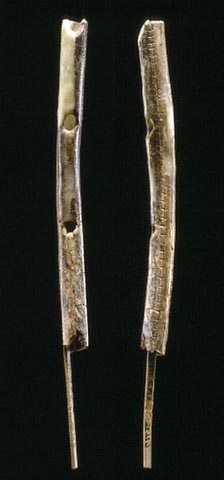
One of the flutes has been fashioned from mammoth ivory.
Study: Love music? Thank a substance in your brain PhysOrg - January 9, 2011
Whether it's the Beatles or Beethoven, people like music for the same reason they like eating or having sex: It makes the brain release a chemical that gives pleasure, a new study says. The brain substance is involved both in anticipating a particularly thrilling musical moment and in feeling the rush from it, researchers found.
Language of music really is universal, study finds PhysOrg - March 19, 2009
Native African people who have never even listened to the radio before can nonetheless pick up on happy, sad, and fearful emotions in Western music, according to a new report published online on March 19th in Current Biology. The result shows that the expression of those three basic emotions in music can be universally recognized, the researchers said. The expression of emotions is a basic feature of Western music, and the capacity of music to convey emotional expressions is often regarded as a prerequisite to its appreciation in Western cultures, the researchers explained. In other musical traditions, however, music is often appreciated for other qualities, such as group coordination in rituals.
Music Reduced to Beautiful Math Live Science - May 7, 2008
It's hard for anyone to say what music looks like, but a new mathematical approach sees classical music as cone-shaped and jazz as pyramid-like. The connections between math and music are many, from the unproven Mozart effect (the idea that playing Mozart's music to children might improve their mathematical abilities) to the music of the spheres (the ancient belief that proportions in the movements of the planets could be viewed as a form of music). Now scientists have created a mathematical system for understanding music.
Music has its own geometry, researchers find PhysOrg - April 17, 2008
The figure shows how geometrical music theory represents four-note chord-types -- the collections of notes form a tetrahedron, with the colors indicating the spacing between the individual notes in a sequence. In the blue spheres, the notes are clustered, in the warmer colors, they are farther apart. The red ball at the top of the pyramid is the diminished seventh chord, a popular 19th-century chord. Near it are all the most familiar chords of Western music.
Oldest record voices sing again - made in 1860 BBC - March 28, 2008
An "ethereal" 10 second clip of a woman singing a French folk song has been played for the first time in 150 years. You hear a woman singing "Au Clair de la Lune," taken from a so-called phonautogram, was recently discovered by audio historian David Giovannoni. The recording predates Thomas Edison's "Mary had a little lamb" -- previously credited as the oldest recorded voice -- by 17 years.
The Phonautograph Wikipedia
Research aims at understanding mysterious music phenomenon PhysOrg - June 29, 2006
Mari Kimura is an acclaimed Japanese violinist who has the rare ability of producing strange sounds with her instrument. She doesn't know how this is possible. Mari Kimura is a New York based solo violinist that usually lectures at the acknowledged Juilliard School of Music. She is one of the extremely few people who can produce controlled subharmonic tones on violin. Kimura has developed this trait to a signature feature in her compositions and improvisations. The sounds she plays on violin are usually found in a cello.
Researchers Find Where Musical Memories Are Stored In The Brain Science Daily - April 26, 2005
A group of Dartmouth researchers has learned that the brain's auditory cortex, the part that handles information from your ears, holds on to musical memories. The team found that if people are listening to music that is familiar, they mentally call upon auditory imagery, or memories, to fill in the gaps if the music cuts out. Using functional magnetic resonance imaging (fMRI) to measure brain activity, the researchers found that study participants could mentally fill in the blanks if a familiar song was missing short snippets. "We played music in the scanner [fMRI], and then we hit a virtual 'mute' button," says first author David Kraemer, a graduate student in Dartmouth's Psychological and Brain Sciences Department. "We found that people couldn't help continuing the song in their heads, and when they did this, the auditory cortex remained active even though the music had stopped."
Body movement to create music BBC - July 12, 2004
Scientists are developing ways of capturing human movement in three dimensions which would allow music to be created with the gesture of an arm. It would eliminate the need for music technicians to twiddle hundreds of knobs to achieve the perfect sound.
The technique could also be used for scrolling a webpage, especially useful for people with limited mobility.
Music makes brain learn better BBC - July 27, 2003
The hours spent mastering the violin or piano are worthwhile - music lessons boost children's memories. Researchers from Hong Kong have found children who are given musical training have better verbal memories than those who have not had lessons. They say their findings could help people recovering from a brain injury as well as healthy children. Psychologists from the Chinese University of Hong Kong studied 90 boys between the ages of six and 15.